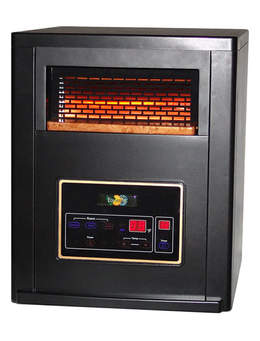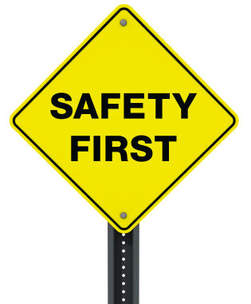
by Flagship Staff | Feb 13, 2018 | Blog
Smart home technology use is a rising trend. From connected appliances to Wi-Fi lightbulbs to automated environmental controls, smart home devices are wooing homeowners with the capabilities to remotely control and monitor their home from anywhere.
After all, smart technology can inform you when your kids get home from school. It can alert you to a burst pipe before the damage gets out of control. It can save you money and time. Unfortunately, all that connectedness brings along some concerns. Your privacy and security may be at risk.
The very definition of a smart home is that there are features that can be controlled via an app or other remote access portal, like a website. This typically requires an internet connection, so that your home devices are accessible from afar. But the minute you can access a device from the internet, someone else can, too. Here’s how to protect yourself from the risk of hacking.
Read the Fine Print
Not all security and privacy concerns result from illegal activity. Each time you use a website or app, or sign up for a connected service or product, you agree to their terms and conditions. Read and understand the fine print, which typically includes a privacy policy, and don’t be afraid to pass on services that don’t take your privacy seriously.
Secure Your Home Network
Your home network is the gateway to your house. Take the time to set it up properly and ask for help if you don’t know how. Always change default usernames and passwords to something that isn’t easy to guess. Turn on encryption so sensitive information is hidden from snooping eyes.
Pay Attention to Passwords
No matter how hard they may be for you to remember, secure passwords are essential. Avoid obvious passwords like pet names, birthdays, kids’ names or phone numbers. It’s also important to change passwords regularly in case they have been compromised.
Know Your Stuff
Some devices literally record your voice or your image, while others record things like your schedule and shopping habits. All of these activities could become risks to your privacy and security. Take the time to understand how each device in your home works. When is it recording information? Is this information being sent to the manufacturer or accessible only to you? Are there visual clues or prompts that show when recording in on? What does it record? And what does the information it’s capturing tell others about your life? Know how to disable devices when necessary and find out if it’s possible to delete your personal records.
Make Smart Choices About Your Smart Home
As fun as it may seem to have your whole house connected, it’s also important to make smart choices. Weigh the benefits of having devices such as security cameras and voice assistants. They can offer more convenience and even security to your life. But they’re only worth it if they’re secure. Use brands and a service provider you trust. Here are other tips:
Purchase a smart home security service or devices that can alert you to suspicious activities.
Bundle your home security and smart home automation capabilities offered by home security companies or your cable provider. They have experts who can professionally install the equipment and be on call for tech support. They also offer a lot of the bells and whistles that people enjoy in their smart homes.
Although smart home tech use is on the rise, we’re still in the early stages of adoption. As popularity increases, we will start to see more security holes and breaches. While we can’t predict where those will fall, it’s best to be prepared with knowledge of the available security measures. A little bit of thought and planning can protect all your connected home devices and give you peace of mind along the way.

by Flagship Staff | Feb 7, 2018 | Blog
Howling winds, drifting snow, and cold temperatures make it challenging at times to leave the comfort and warmth of our homes. Snuggling up by a warm fire, with a book or tablet and a cup of coffee is relaxing.
If you choose to use a fireplace or other supplemental methods to heat your home, please make sure you take the necessary precautions.
Did you know that half of all home heating fires occur in December, January, and February? Each year home fires cause 890 deaths and $2 billion in property loss. The most common time for fires to occur is 5:00-8:00pm.
Here are some heating safety tips to prevent your home from catching fire this winter.
General Safety Tips
1. Follow the three feet rule. Keep flammable materials at least three feet away from fireplaces, wood stoves, and space heaters.
2. Test your smoke and carbon monoxide detectors regularly. Consider replacing batteries when Daylight Savings Time begins and ends.
3. Avoid overloading electrical outlets.
4. Don’t use candles during a power outage. Rely on flashlights instead.
Space Heater Safety Tips
1. Reading is fundamental. Always read your owner’s manual and look at warning labels.
2. Directly plug into a wall outlet. Never plug a space heater into an extension cord or power strip. These alternative electrical sources could overheat and cause a fire. In addition, don’t plug anything else into the wall outlet that is being used by the heater.
3. Inspect the cord and plug regularly. After removing it from storage, it’s a good idea to be on the lookout for broken plugs or frayed cords.
4. Keep out of walkways or common areas. Never place a space heater in a doorway or common area like the kitchen.
5. Keep an eye on young children or pets. Both are very inquisitive. Turning your back for a split second could lead to an injury.
6. Keep them on flat hard surfaces. It’s a good idea to keep them off furniture such as cabinets and tables. In addition, if you have long thick carpet, consider laying down a piece of wood or a flame resistant mat.
7. Turn out the lights. When you decide to call it a night, make sure you turn it off.
Fireplace Safety Tips
1. Insect your chimney yearly. Experts recommend you have your chimney inspected each year. How much you use your fireplace will determine if you need a chimney sweep.
2. Wood Type. You can burn any type of hard or soft wood as long as it’s seasoned. Seasoned wood is wood that’s cut, especially oak (hardwood), and sits idle in a dry environment for a full year. Properly seasoned wood creates hot fires, which produce less creosote resulting in less buildup on your flue and in your chimney.
3. Use a mesh screen. Have a large screen in place to prevent sparks from landing on the floor.
4. Doors open or closed? The stage of your fire determines whether the glass doors should remain open or closed. When starting a fire, leave the doors open to allow for proper airflow. If you’re enjoying a fire with family or friends, having the doors open allows you to enjoy the ambiance of the fire. When you leave the room, close the glass doors to keep the fire contained. Always keep a watchful eye.
5. Keep the area clear. When enjoying a fire, make sure it’s clear of items that could catch fire from a spark.
6. Safely stack the logs. Remember, this is an indoor fire. Stack logs near the back and only a couple at a time. Roaring fires aren’t meant for indoors.
7. Store cooled ashes in a metal container. Experts recommend storing cooled ashes at least ten feet from your home and other buildings on your property.
Pellet Stove Safety Tips
1. Purchase the recommended pellets. Refer to your owner’s manual and purchase the right pellets to ensure your stove runs and operates efficiently.

by Flagship Staff | Jan 31, 2018 | Blog
Cold winter weather can take its toll on our homes, cars, and bodies. Frozen pipes, dead car batteries, and bodily injuries, are common and often require us to seek help from a professional.
As we age, cold weather can be extremely dangerous. Plummeting temperatures can lead to, icy sidewalks, hypothermia and other serious injuries.
If you have elderly neighbors, friends, or relatives, check in with them this winter and share these winter safety tips.
1. Dress in layers. Older adults can lose body heat quickly and be unaware that a change in body temperature is occurring, making them susceptible to hypothermia. Hypothermia occurs when our body temperature gets below 95 degrees Fahrenheit. Consequently, serious health problems can occur, such as a heart attack, kidney problems, or death. Selecting the right number of layers is important. Dressing in multiple layers will help keep them warm and reduce heat loss. To learn more about Hypothermia and symptoms, click here.
2. Keep the furnace running. Experts recommend keeping the indoor temperature around 68 degrees Fahrenheit at a minimum. While many elderly people live on a budget, it’s important to keep their homes warm. Consider helping with some small home projects to keep heating bills down. Such projects may include closing vents, putting plastic on windows, or placing rolled towels or blankets in front of doors to reduce drafts.
3. Space heaters can be dangerous. During the winter months, home fires increase due to the use of alternative heat sources. People 65 and older are three times more likely to die or be injured in a home fire. If you know someone who’s using a space heater, share with them the “7 Highly Effective Portable Heather Safety Habits.”
In addition, if they’re using a fireplace to heat their home, make sure they have the glass closed or a large screen to prevent sparks from landing on their flooring.
Lastly, make sure they have working smoke and carbon monoxide detectors on each floor of their home.
4. Prevent broken hips. Broken hips are a common injury for the elderly, but can lead to other health complications. To prevent injuries, shoes with non-skid soles should be worn.
If they like to venture outside for a little exercise, encourage them to stay inside until snow and ice have been cleared from their property. Lastly, recommend that they stay inside after dark. If they’re independent and don’t adhere to your advice, consider creating a small safety kit they can take with them when they go outside. A small kit could include:
A bottle of water;
Medications;
Hand warmers;
A whistle; and
A flashlight.
5. Keep their pantry and medicine cabinet full. If a winter storm is approaching, make sure they have plenty of food and water to last for five to seven days.
6. Use smart technology. With today’s smart technology, we can keep better watch over our homes and loved ones. Technology companies, such as HoneyCo makes it easy to turn an aging parent’s home into a smart home. Voice activated personal assistants like Siri, Alexa, and Cortana can help.
7. Visit often.
8. Discuss severe weather. When the deep freeze is about to settle in or a blizzard is going to strike, make sure they understand. Let them know when the weather event will occur and how long it will last.

by Flagship Staff | Jan 25, 2018 | Blog
During the winter months, frozen lakes host a flurry of outdoor activities. Anglers, ice shanties, and recreational vehicles are a common scene.
While many enjoy winter activities on the ice, these activities can lead to serious injury if the proper precautions aren’t taken.
Before you head out on the ice this winter, check out these safety tips.
1. Share your fishing plans. It’s a good idea to share your plans with your family, friends, or neighbors. Let them know:
The name of the lake you’ll be fishing on;
The location of your fishing hot spot (i.e. north shore, south shore, etc.); and
When you plan to arrive home.
If the fish are actively biting and you decide to stay out longer, notify them of your change in plans.
2. Bring a friend. When going ice fishing, never go alone. A friend can:
Provide an extra set of hands;
Help you stay focused on safety; and
Alert authorities if something goes wrong.
3. Talk to the locals. They can provide information on ice thickness, water movement, and other information pertinent to the lake.
4. Follow these ice thickness guidelines. Remember, ice is never 100% safe. Ice thickness can change very quickly.
2″ or less – STAY OFF!
4″ – Ice fishing or other activities on foot
5″ – Snowmobile or ATV
8″ – 12″ – Car or small pickup
12″ – 15″ – Medium truck
5. Purchase a flotation suit. A flotation suit is the most important item you can buy. If you fall through the ice, a flotation suit will keep you warm and make it easier to escape the frigid water.
6. Carry a pair of ice picks/rescue claws. Keep a quality pair of ice picks with you at all times. If you fall through the ice, ice picks make it possible for you to climb out. Don’t skimp on this life saving device.
7. Carry a throw rope. A throw rope can be used to pull a fellow angler to safety.
8. Leave the lake before dark. Navigation at night can be treacherous. Without familiar visuals or a navigation device, you can become disorientated making it difficult to find your way off the ice.
9. Install proper ventilation. If your ice shanty is heated, make sure you have good ventilation. A poorly ventilated shanty can lead to carbon monoxide poisoning.
10. Bring a portable power bank battery charger. Cold temperatures can quickly drain your smartphone battery. A quality charger can save the day. I would recommend buying a high capacity charger. While they’re a bit more expensive, they can provide multiple charges, and can charge multiple phones at one time. To avoid permanent damage, turn your phone off in extremely cold temperatures.
11. Respect the ice auger. Ice augers are built to drill holes quickly and efficiently. Before operating it for the first time, read the owner’s manual. In addition, avoid wearing loose clothing or jewelry. When you are finished with the auger, store it in a safe place. Lastly, always maintain sharp blades to avoid injury while drilling.
12. Stay hydrated. Staying hydrated is very important. Dehydration can happen quickly in cold weather because your body is working hard to stay warm. Check out “8 Tips for Hydrating in Cold Weather.”
13. Layer up. Selecting the right number of layers is important. Beginners to winter activities tend to underdress, especially if it’s a sunny day. Choosing the right number of layers, based on temperature, can only be accomplished through trial and error. Before venturing out on the ice practice at home.

by Flagship Staff | Jan 17, 2018 | Blog
Whether at work, the grocery store, or school, it’s very common to hear sounds of the season. Unfortunately, I’m referring to sneezes, coughs, and sniffles.
Between December and March, millions of people suffer from the common cold, influenza (flu), pertussis (whooping cough), and Norovirus (stomach bug). Depending on the severity of the season, people can be affected until May.
You may ask yourself why so many people are sick during the winter. Is cold winter weather really to blame? Medical experts believe cold weather does not actually make us sick. What makes us sick is the change in our lifestyle. Germs are always around us. However, when cold weather sets in, our windows stay closed, the heat goes on, and we spend more time indoors (i.e. our homes, shopping malls, sporting events, concerts etc.). Infected air in our homes as well as large groups of people in an area makes the transmission of germs easier.
Because I have family members who work in healthcare, I know that many people are confused about the symptoms associated with these illnesses.
Below is a brief explanation of the flu, as well as how it’s spread and treated. To learn more about symptoms of the common cold, the flu, and whooping cough.
I hope that being able to identify the differences between each illness, helps you and your family members get the appropriate care you need to get on the road to recovery.
Influenza (flu) – When people experience nausea, vomiting, or diarrhea, they often refer to this as the flu. That’s incorrect. The term flu refers to influenza, which is a respiratory disease. Different viruses, bacteria, or parasites cause gastrointestinal distress.
How’s the flu spread? It’s spread by airborne droplets of moisture that float through the air when a person sneezes, coughs, or talks. When the droplets encounter your eyes, nose, or mouth, infection can occur. Illness symptoms usually appear within 1-3 days.
How’s the flu treated? Depending on the severity of the illness, your physician may administer anti-viral drugs. Otherwise, some remedies include:
Bed rest;
Drinking plenty of fluids; and
Taking pain relievers.





